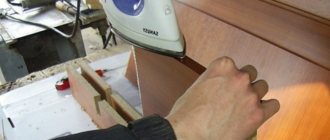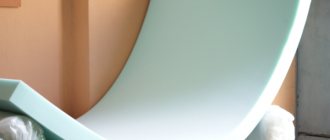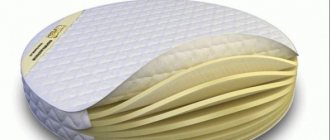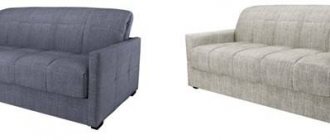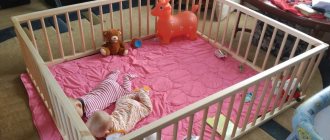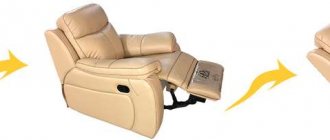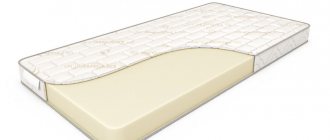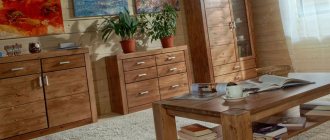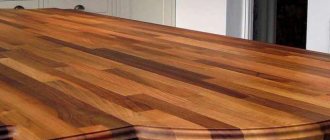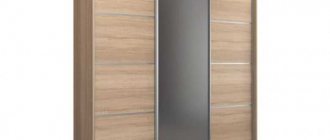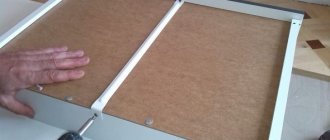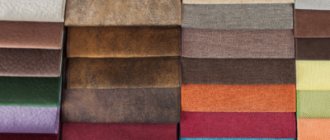Which brand of wood glue is best to choose?
To know how to buy waterproof wood glue, you should carefully study the composition information. Today on the construction market there is a large selection of excellent adhesive compositions that provide high performance parameters for joints. After drying, a moisture-resistant wood adhesive often turns out to be more reliable than the base coating. When choosing a product, you need to have information about the product’s ability to glue wood of various species and change its color. The most famous brands:
- Moment . The Russian manufacturer produces glue in the form of an aqueous dispersion. It firmly connects wood species, as well as various building materials. Experts note the availability of glue, its reliability, and quick drying.
- Kiilto . Finnish company producing paint and varnish products in various directions. Adhesive compositions are distinguished by the absence of toxic components.
- Titebond . The product is produced by a well-known brand from the USA. Wood furniture glue holds the structure together perfectly. The manufacturer regularly works to improve technology, so the range is constantly increasing.
- Kleiberit . The brand from Germany offers various adhesive compositions for furniture, which are designed for different types of coatings. All products are of high quality.
- UHU . A German brand that is a leading developer of adhesives in terms of quality parameters and assortment. The company strives to take a leadership position in environmental protection issues.
- Akfix . A young but well-known brand from Turkey. Focused on the production of environmentally friendly paint and varnish products and technologies in order to find solutions that best meet the needs of consumers.
- Tex . Well-known developer of paint and varnish products. Adhesive compositions are used in industry and in everyday life. Suitable for plywood, cardboard, paper, they are resistant to moisture and serve as an additive.
- Lakra . One of the largest domestic developers of decorative paint and varnish products. Adhesive compositions from Lakra are manufactured in accordance with international standards of quality, safety, and environmental friendliness.
Each manufacturer is considered a well-known representative on the market and produces good quality products. Considering that the companies in question have positive criticism, the consumer will have no problem finding the best wood adhesives.
Homemade wood glue
You can make your own glue using chalk, slaked lime, or wood glue.
You can also make wood glue yourself. There are many options: for flooring, for sealing cracks, for outdoor work.
- A thick mixture of wood glue, chalk and ash . Often wood sawdust or shavings are also added here. The latter option is used for sealing seams, cracks, and chips. Common uses are puttying and priming surfaces. The ratio of components is determined experimentally. The most popular proportion is: 2 parts glue, 1 part ash and 0.5 parts chalk.
- raw materials are slaked lime and freshly curdled cottage cheese . The ingredients are mixed and boiled in a water bath. The glue is thick, viscous, but not liquid. Spread the composition in the direction of the wood fibers. It is effective on dry wood. If the moisture content of the material exceeds 10–15%, the bonding will be weak.
- Syndeticone is the best option among homemade compounds. All components - wood glue, slaked lime, sugar - are soaked for 24 hours. Then mix thoroughly and leave to stand for some time. Syndeticone adhesive is insensitive to chemically aggressive substances, is not afraid of water and provides strong adhesion. Suitable for connecting both moving and fixed parts.
When making homemade mixtures, it is very important to observe proportions and technology. Otherwise, the composition does not justify itself.
How to glue furniture: types of glue
All adhesive mixtures are divided into groups depending on their purpose. Each of them is characterized by strength and reliability after drying. In most cases, furniture adhesive is chosen based on the main component of its composition. Depending on this criterion, the main types of glue are:
- Water-based glue (animal, PVA).
It is most effective when gluing fabric surfaces, foam rubber, and some types of fibers.
Please note that working with the listed materials does not accept the use of any adhesive mixtures other than PVA. In addition to the lack of results, the wrong composition can ruin the surface. So, liquid superglue very quickly corrodes loose fabrics.
- PVA, hot glue.
To obtain a lasting result when working with these compositions, it is fundamentally important to adhere to the gluing technology.
- Wood glue.
Used for joining wooden parts, suitable for working with surfaces that are constantly exposed to the open air.
- Contact glue.
Most suitable for repair and restoration of both indoor and outdoor furniture. The glue quickly adheres to surfaces, but the reliability of the connection during operation can be checked only 24 hours after work.
- Urea-formaldehyde glue.
It is a waterproof mixture that fills cavities well and hardens as a result of a chemical reaction. The most common form of production of such glue is a powder, which must be mixed with water and applied to each of the parts to be joined.
But there are also compositions that are produced complete with a liquid catalyst. In this case, glue powder diluted with water is applied to one surface, and the hardener is applied to the other. After connecting the treated surfaces, it is necessary to secure the assembly using a special tool - a clamp.
You should work with this composition wearing gloves and safety glasses. Before using the glue, also take care to ventilate the work area, since the evaporation of volatile substances released can be hazardous to human health.
Thermosetting compounds can have different numbers of components:
- one-component – this is a ready-to-use consistency;
- multi-component - usually require additional manipulations before application (combining and mixing ingredients).
Depending on the type of main component, adhesives are divided into:
- organic;
- organoelement;
- inorganic.
Furniture adhesives are produced by manufacturers in the following forms:
- liquid (mixture or gel of loose consistency);
- dry (powder);
- solid.
If furniture glue contains a solvent (cyclohexane, acetone, hydrocarbon compounds, etc.), such a product is characterized by rapid drying due to the evaporation of volatile elements. Water-based adhesives take longer to dry.
Preparation and execution of work
In order for the use of glue for furniture repair to give the best results, you need to prepare the surface to be treated and ensure that it becomes uniform, without defects:
- The surfaces to be bonded must first be cleaned of dust and dirt.
- Plastic surfaces can be further treated with a solvent to remove all grease deposits.
- It is better to sand the wood with the finest grit sandpaper. A rough surface will promote adhesion, but do not get carried away with processing so as not to damage the structure of the wood itself.
Now it’s worth saying a little about what other points need to be taken into account when using the adhesive composition:
- If there are no special instructions in the instructions, then the glue should be applied in an even, not very thick layer to the surface, and to both parts. This is important for this type of connection, such as a tenon with a socket.
- When working with a two-component composition, as a rule, the resin is applied to one part, the hardener to the other, unless there are special instructions for use from the manufacturer.
- When using types of glue that take a long time to set, it may be necessary to use a clamp. In this case, there is no need to firmly fix the device, otherwise all the glue will squeeze out.
- The contact composition is applied in a thin layer to both surfaces, after which they are connected to each other and briefly fixed either with your hands or by pressing something heavy on top - it all depends on the type of glue.
Important! Materials containing synthetic additives require special conditions of use. In addition to using special protective equipment, work must be carried out away from open sources of fire.
- Experienced craftsmen advise, after applying the glue, to connect the parts and rub them against each other. Excess composition and air will be removed, while the glue will be more evenly distributed between the parts.
- If the manufacturer does not include a special applicator with your purchase, then you can use a regular brush or even a cotton swab for small details.
- For restoration work, it is best to use brushes with a wire ring - it stiffens the bristles and moves or is removed as the bristles wear out.
- In order to apply glue to hard-to-reach places, or if the joint is very narrow, then it is better to use a regular plastic syringe.
- If the glue comes to the surface, it is better to remove it immediately. After hardening, this will be much more difficult to do; marks may remain on the furniture.
Basic requirements for the adhesive composition
To achieve maximum strength and reliability of fixation, you should purchase an adhesive with the optimal composition. Components are selected taking into account the following criteria:
- Resistance to elevated temperatures. This is required when using items in open areas, near heating sources, gas and electric stoves.
- Resistant to weight load. Typically, this parameter is recommended to be taken into account when fixing the legs of tables, shelves of cabinets, seats of sofas or chairs.
- Vibration resistance. This parameter is important when placing products near generators, washing machines and other equipment.
- Chemical resistance. This is true for items that have to be washed frequently with household chemicals. They can be located in the kitchen, toilet or bathroom.
- the melting point should be 80-100 degrees;
- operating temperature of hot melt adhesive is 120-200 degrees;
- hardening time is 5-40 seconds - it all depends on the composition of the substance.
TOP 3 adhesives based on epoxy resin
ABRO ES-507
ABRO ES-507
Our TOP 3 includes a model of absolutely transparent epoxy glue. This universal product from ABRO is one hundred percent suitable for gluing wooden elements to a surface made of concrete, cement or other material.
The fairly compact size of the tube allows you to work with small parts, which is convenient. The composition contains only high-quality components, therefore the quality of gluing and setting is very high.
Uhu Plus Endfest 300
Uhu Plus Endfest 300
This epoxy adhesive from the German company Uhu Plus takes second place. Firstly, it has very good adhesion properties. He will be able to glue wood with another material, no matter what it is. But he won’t be able to connect wood with glass.
Secondly, this glue dries quite quickly - it takes about an hour and a half. But the connection will not be completely ready so quickly - it is better to touch the glued elements the next day after the procedure. In this case, the applied seam will be strong and durable.
Apple tree variety White Rose - description, photo
Among the advantages of this glue from a German brand are high strength, resistance to mechanical influences, and moisture. It is characterized by reliable initial setting and high adhesion.
Judging by the reviews, many people are happy with this product. The elements are held together very tightly, the strength of the adhesive seam is very high, and the glue itself is impervious to moisture and other negative influences.
Super Epoxy Moment
Moment Super Epoxy
The best epoxy glue in our TOP 3 was Moment glue. It is very easy to use, and therefore domestic craftsmen love it. Its packaging is made in such a way that it is convenient to apply adhesive made on the basis of epoxy resin, and then fasten them to other materials, for example, concrete, plastic, porcelain, and so on.
Unlike others, this glue really deserves its first place.
You may be interested to know which corded screwdriver is worth getting .
Rating of the best adhesives
Previously, many craftsmen used homemade glue both for repairs and for furniture production. Now the construction market offers a huge selection of compositions. In order not to get confused in this diversity, we present you with a rating of adhesives based on consumer reviews.
Moment Joiner PVA universal
The domestic manufacturer, which cannot but rejoice, tops this rating. PVA glue Moment Joiner on a water-dispersion basis perfectly glues plywood, MDF, chipboard, veneer and even paper plastic. The main thing is, after use, clamp the parts for 15-20 minutes and keep them in a vice or clamp for a day.
Another advantage of the composition is that it does not stain the surfaces being bonded. You can work with it at temperatures from plus 5 to plus 30 degrees.
Important! Disadvantages: low moisture resistance and inability to carry out work at low temperatures.
Krass PVA PVA D3
The products of the Polish company also occupy a leading position. An analogue of the domestic manufacturer - Krass PVA PVA D3:
- It is used in the restoration of garden and kitchen furniture, when laying parquet and laminate flooring, and when installing windows and doors.
- It gives a strong connection, elastic and transparent seam.
- It is not afraid of moisture, so it can fix even damp wood.
- The absence of organic solvents makes this composition environmentally friendly.
Important! The long drying time is compensated by a fairly budget price.
KLEIBERIT 303.0 and 501.0
The German brand “Kleiberit” is found wherever gluing is present. This product from a company that has been around for almost 70 years has stood the test of time. 2 compositions were recognized as the best:
- Waterproof adhesive Kleiberit 303.0 bonds various types of wood, even exotic and hard ones. After drying, the glue layer is white, and its frost resistance reaches -30°C. Consumers also prefer it for its strength and fast setting.
- Kleiberit 501.0 polyurethane-based adhesive is also moisture-resistant and heat-resistant. It can bond not only wood to wood, but also to mineral tiles, ceramics and concrete. Suitable for both indoor and outdoor use. Users note that it is easy to use, does not drip, and provides a strong connection. But it is difficult to wash from hands; good ventilation of the room is required after working with it.
Epoxy adhesive EDP
Of the epoxy compounds, buyers note the universal EDP, which has been present on the building materials market for a long time, as the best adhesive for furniture:
- Its main advantage is its affordable price.
- The quality of joining parts when restoring furniture is very high, the seam is strong and reliable.
- This composition does not shrink and is resistant to moisture.
- Various fillers can be added to the composition to enhance adhesive properties.
Important! The disadvantages of the master include a long hardening time and inconvenience in working with this composition.
SOUDAL 66A
Of the variety of polyurethane compositions, consumers also give preference to this Belgian company, since its composition can withstand harsh conditions of use:
- SOUDAL 66A adhesive is a super waterproof material, it can glue even very wet wood.
- During use, it forms a foam that perfectly fills any cracks and irregularities.
- A durable seam is not afraid of thirty-degree frosts and even heat of 100 degrees Celsius.
- Its high adhesion allows the composition to be used for interior and exterior work.
Important! Its main drawback is its high price, but for such excellent characteristics it’s difficult to call this a disadvantage.
UHU PLUS ENDFEST 300
Another German company is also a leader in the building materials market. UHU produces a two-component adhesive with ultra-strong properties:
- The epoxy resin in the base of the composition allows you to glue various materials of any area, with the only exception being glass.
- The setting time of the composition is 1.5 hours, the final hardening time is 24 hours. After final hardening, a seam is obtained that is characterized by impact strength and resistance to aging.
- This composition is not afraid of moisture, so it can be used to glue wet wood and repair garden furniture.
Important! The disadvantages many include is the need to prepare a working mixture, although this does not take much time. The two components are mixed until smooth and applied with a spatula or brush.
Criterias of choice
To choose a high-quality adhesive for fixing objects made of chipboard, it is worth considering many criteria.
Surface type
As a rule, on the packaging in the “scope of application” section information is provided about the materials for which it is permissible to use glue. If such information is not available, it is recommended to obtain it by other methods. The components will also help determine the types of surfaces that can be glued. If the composition is not indicated on the packaging, such glue should not be used. It may cause property damage.
Base type
Correctly chosen glue can provide reliable fixation, but damage the base of the furniture. To avoid such problems, you should choose synthetic elastomers. Such substances do not cause negative consequences.
How long can it be stored?
The shelf life of the glue is indicated on the packaging. As a rule, it is a maximum of 45 days. If the substance disappears, it changes its consistency and begins to thicken.
Harmful components
The adhesive should not contain trichloroethane. This component causes serious harm to health. Its fumes pose a danger to people. It is also worth considering that the ingress of water onto a surface treated with glue provokes an irreversible oxidation process. This will minimize any attempts to improve the condition and appearance of the furniture.
Consistency
When choosing a composition, it is worth considering its density. The minimum parameters should be 1.1 grams per cubic centimeter. This consistency is considered liquid, but it is enough for complete fixation. Lower settings will not give the desired degree of fixation.
Color
Most types of glue are yellow, white or another shade. When using the substance, this feature should be taken into account. Many people try to use colorless formulations. The opaque mass will be noticeable even under a layer of varnish.
Choosing glue for wooden chairs
To know how to properly glue a wooden chair, experts recommend choosing high-quality glue according to the following characteristics:
- light fastness;
- water resistance;
- absence of traces on the surface;
- connection strength.
Popular adhesives among craftsmen are PVA, BF, epoxy, syndeticone, polyurethane and others. Each of them has a number of specific advantages for sealing a wooden chair:
- PVA has an unlimited shelf life, acts quickly and is non-toxic.
- Epoxy adhesive has versatility of use and strong adhesion. It is popular due to its strong connection of various materials.
- BF has high moisture resistance and quick drying.
- Syndeticone durable adhesive can withstand high loads, is resistant to liquids and aggressive compounds.
- Polyurethane waterproof adhesive is used for gluing various materials. It is physically and chemically inactive to different temperatures, ultraviolet radiation, moisture, and is resistant to stress.
Which glue is best for gluing wood and structures made from it is a question that depends on the wishes and budget of the craftsmen.
Types and technical characteristics
Most often, the following types of furniture glue are used to repair furniture made of wood, chipboard or plywood:
- PVA is the most common for this type of work. It has a low price and is capable of reliably gluing fabric, leather and foam rubber to wood. PVA-1 is suitable for indoor work, soluble in water. PVA-2 has moisture-repellent properties and can be used for outdoor furniture, but with constant exposure to water it also breaks down. PVA may leave yellow stains, and this must be taken into account when using.
- Joiner's (or animal) is a durable furniture adhesive designed for joining wooden elements together. To prepare granules, the substance must be dissolved in water and boiled in a special device - a “glue cooker”. This composition is highly durable and does not deteriorate over time. The only drawback is the complex preparation process.
- Contact , containing volatile substances. This furniture adhesive retains its properties for several minutes after application, which allows you to adjust the location of attachment. It is necessary to glue under long-term pressure to achieve maximum effect. The composition is durable and yet elastic. Volatile substances released during setting have an unpleasant, pungent odor.
- Hot-melt adhesive requires the use of a special gun. The substance acquires adhesive properties when heated. After application to the surface it hardens very quickly. This furniture adhesive is most often used for working with veneer.
- Resorcinol and urea-formaldehyde adhesives. Can be one- or two-component. In the first case, the substance is mixed with water, in the second with the included hardener. These are epoxy adhesives; when using them, it is necessary to use protection to avoid damage due to chemical reactions. They have high moisture resistance and are used to fill cracks, as they quickly set and harden.
How to glue a dried out wooden chair
Wooden chairs not only have an attractive appearance, comfort, and exquisite design, but are also highly durable and environmentally friendly.
Unfortunately, over time, such chairs tend to wear out, dry out, become damaged, or their legs simply become loose. Unlike plastic products, they consist of many small parts that are connected with special glue and several tools. If your chair is drying out, you've probably asked yourself the following questions: how to glue it yourself at home, what kind of glue to choose for quality, and how to do the job correctly.
What to do if a wooden chair breaks
Broken legs on wooden chairs are the most common problem. First, you need to completely examine the interior element and determine the nature of the damage. Failure may be associated with a violation of the integrity of the structure, or with the loosening of individual elements associated with drying of the glue.
The most common part of chairs that breaks is the legs.
A broken chair can be restored by gluing the torn elements together with special glue.
Purpose
Furniture glue can be used during different processes:
- direct production of interior items. Often people prefer to install environmentally friendly and unique structures created with their own hands in their homes. To do this, a drawing is formed, parts are prepared, and then they are connected with fasteners or glued together using high-quality glue. In this case, it is necessary to take into account what material the product is made of, since the correct choice of adhesive substance depends on this;
- repair of furnishings. Often high-quality models break due to significant impact or other factors. They can be repaired independently in different ways, but often only gluing individual elements is suitable. A special furniture glue is suitable for this. It is recommended to work with it with a special tool, due to which it is possible to apply the substance to the most inaccessible areas of the object.
Using high-quality and reliable furniture glue has many advantages:
- for any material, you can choose a special composition that is ideally suited to the structure and characteristics of the surface, therefore, ideal and reliable bonding of coatings is guaranteed;
- a highly elastic adhesive seam is formed;
- it is advisable to choose a waterproof product that can easily withstand exposure to moisture and does not lose its properties and adhesive parameters;
- high-quality and reliable compositions gain maximum strength in just 6 or 8 hours;
- It’s really easy to use this glue, so anyone without the appropriate experience or specific skills can handle furniture repair.
A significant point is the competent choice of the adhesive substance itself, for which the characteristics of the surfaces to be glued and the operating conditions of the furnishings are taken into account.
Mode of application
List of recommendations to consider when working with furniture glue:
- First of all, you need to read the instructions included with the composition. From it you can find out whether it is suitable for the material used and how the gluing occurs.
- It is important to become familiar with the composition of the glue and pay attention to the presence of toxic substances (trichloroethane is especially dangerous).
- Work with toxic types of glue should be carried out outdoors or in a well-ventilated area.
- The surfaces to be bonded are thoroughly cleaned of dust and dirt and must be completely dry. In most cases, moisture will prevent the adhesive from fully setting.
- Many types of glue are yellow, white, or other tints. When using this fact, you need to take this fact into account or choose a colorless option. Opaque furniture glue will be visible even under a layer of varnish or stain.
- The glue is most often applied in a small layer on both surfaces to be glued. After this, they must be connected and pressed tightly against each other.
Important! Some two-component compositions involve applying the base to one surface and the hardener to the other. In this case, the chemical reaction begins after the parts are combined. This allows you to achieve the maximum level of connection strength.
Selection rules
To purchase suitable glue for furniture, you need to consider simple rules:
- type of surface: usually it is written on the packaging what materials the product is intended for;
- type of coating base: furniture glue can hold all parts together efficiently, but the base is damaged, so you should choose a product based on synthetic elastomers;
- composition: there should not be trichloroethane, which is very harmful to human health;
- the presence of synthetic rubber and solvent: the components are harmless to humans;
- color: usually the product is presented in white or yellow, so it must be selected to match your furniture;
- density of the product: you need to choose an indicator not lower than 1.1 g/cm3, which will be enough for high-quality work.
Simple rules will help you purchase the right product and properly repair the product.
Famous manufacturers
The production of glue has long been widespread, so many companies are currently engaged in it, usually presenting a whole line of products for each type of surface.
Some well-known manufacturers of furniture glue:
- Henkel is a German company that produces a wide range of products in different directions. Dorus furniture adhesive is distinguished by the absence of toxic substances and the content of only natural ingredients. The product has high adhesion and wear resistance.
- Fantoflex is a domestic company. Specializes in the production of contact adhesive that does not require mixing and has high strength. Production technologies are not much inferior to imported ones. The glue tolerates low temperatures well and does not lose its properties.
- Bostik is a French company that has been producing adhesives for over 120 years. Offers a wide range of furniture adhesives of various compositions, designed for different types of surfaces. All products are of high quality.
Buffalo animal. Buffalo lifestyle and habitat
Advice! When doing minor repairs to your own furniture, using glue from well-known brands is not necessary. You can purchase regular PVA furniture glue from any domestic manufacturer.
Properties
To ensure maximum strength and reliability of connections, the adhesive joint must be made with a product with an optimal composition. Ingredients should be selected taking into account the following parameters:
- resistance to temperature load (use of objects outdoors in the open sun, near heating appliances, gas, electric stoves);
- strength under weight load (seats of sofas, chairs, table legs, shelves in closets, other elements that can withstand the weight of objects);
- vibration resistance – furniture located in close proximity to washing machines, generators, and other work equipment;
- resistance to chemical attack - refers to those elements that are supposed to be washed frequently with household chemicals (kitchen, bath, toilet).
Technical parameters of thermoplastic furniture adhesives:
- melting temperature value is within 80-100 o C;
- the working temperature of hot melt adhesive is 120-200 o C;
- hardening period - from 5 to 40 seconds depending on the composition.
Hot melt adhesive does not contain active (volatile) solvents. To firmly fix the surfaces, they must be pressed against each other and held for some time (until the adhesive seam initially hardens). Reliability of gluing is ensured by the resins, rosin, and synthetic rubber included in the composition. Some options contain a small amount of highly volatile solvents, which reduces the setting time of the mixture.
Durable versions of water-based adhesives sometimes require placing the treated surfaces under a press. This ensures better bonding of the layers and increases the reliability of the adhesive seam.
The quality of gluing depends not only on the properties of the adhesive composition, but also on the correct preparation of the surface.
For example, porous materials such as plywood, wood, chipboard must be pre-dried and cleaned. A high percentage of moisture can increase the setting period of furniture glue and reduce the strength of the adhesive seam.
Epoxy
In addition to epoxy resin, the composition includes hardeners, solvents, fillers and plasticizers.
The main component in such products is epoxy resin, invented in 1938. On its basis, the first glue was produced already in 1940. It has found application in many industries - construction, aircraft, shipbuilding, mechanical engineering.
The product has the following advantages:
- heat resistance up to 250 °C;
- frost resistance up to – 20 °C;
- resistance to oil, gasoline, household chemicals;
- resistance to shrinkage and cracks;
- waterproofness, waterproofing.
The main disadvantage of epoxy glue is that it cures quickly, so you need to work very precisely. If they come into contact with the skin, such compositions cannot be washed off.
Epoxy adhesives are:
One-component
Such products contain liquid resin, often with a solvent. The glue does not require preparation and can be used immediately. One-component compounds are used for small parts. Some adhesives set under normal conditions, others - under the influence of heat. The former are resistant to alkali and acid solutions. But with prolonged exposure to water, the strength of the connection decreases, especially when it comes to wood. Hot-curing adhesives (set at temperatures of 140...300 °C) have increased heat resistance and electrical insulating properties.
Two-component
Most epoxy adhesives are produced in this form. The kit contains two tubes: one contains a paste, the other contains a hardener (powder or liquid). The products are combined and mixed until smooth, and then used as quickly as possible (hardening occurs very quickly - after 1-2 minutes).
Epoxy adhesives come in the form of a plate-like mass, reminiscent of plasticine. The latter is soaked in water to a paste-like state and applied to the surface to be glued.
Popular epoxy adhesives:
- “Moment Epoxylin” (cold welding technology);
- “Contact” (in the form of a plastic mass);
- EDP is universal.
Expert opinion
Torsunov Pavel Maksimovich
Epoxy adhesives should not be used for products that will come into contact with food.
How to glue correctly
To glue surfaces, you should follow the following rules:
- Carefully study the instructions that come with the composition. This will help determine the type of panels that can be fixed and the specifics of the work.
- Degrease surfaces. It is recommended to do this with isopropyl alcohol.
- Distribute the adhesive composition using a brush or roller.
- Connect all parts and secure with a clamp.
- Apply a press for a day.
- Remove excess before the substance dries.
To achieve reliable fastening, all parts that are planned to be subjected to increased loads should be additionally secured with screws. There are two-component compositions that involve applying a base to one surface and a hardener to the second. In such a situation, the chemical reaction will begin only after the elements are combined. This makes it possible to obtain the most durable connection.
Rules for working with glue when gluing chipboard
Gluing chipboard together is not difficult. This connection is used to increase parts to the desired size.
All work is carried out at a temperature not lower than 10 degrees, while maintaining normal humidity. The surfaces are prepared and cleaned before applying the glue. The mass is distributed with a brush or spatula. There is glue for chipboard, which just needs to be applied to one of the planes. Fixation is carried out for 20 minutes, complete drying will occur in a day.
How to glue chipboard to chipboard (chipboard)
The chipboard gluing process consists of the following steps:
- Isopropyl alcohol is used for degreasing.
- The adhesive mass is distributed over the plane with a roller or brush.
- The elements are connected, fixed with a clamp, or a press is applied for a day.
- All excess is removed before drying.
- To ensure full reliability, if the parts are subjected to heavy loads, it is recommended to perform additional fixation with screws.
We recommend videos on the topic:
About glue water resistance classes
In Europe, each construction and other product has its own definitions. As for glue, it also has designations. Most often, when talking about this, they mention the water resistance classes of glue according to DIN EN 204 standard , which has successfully taken root in Russia.
Let's talk briefly about each of these classes.
- D1 . Lowest water resistance class. Adhesive compositions of this class can be used indoors, the temperature in which is less than 50 degrees Celsius. The moisture content of the wood should be no more than fifteen percent. Brief exposure to water is allowed.
- D2 . A little higher class. It can be used in the same rooms, but the permissible moisture content of wood material is slightly higher - up to eighteen percent. Brief exposure to water is allowed.
- D3 . Quite a popular class of glue. It can be used not only inside a house or apartment, but also outside. Brief exposure to water is completely acceptable. At the same time, D3 class adhesives themselves can be used with more damp wood materials.
- D4 . Like the D3, the D4 is suitable for both indoor and outdoor use. Withstands exposure to water, but still requires a protective coating to protect the adhesive.
Each water resistance class has its own characteristics
PVA
Joiner's PVA is used for the manufacture of furniture and interior decoration.
It can be used to fix cork, parquet, veneer, and fasten textile materials, including carpet, linoleum. This is one of the most popular and in demand adhesive compositions among carpenters. It is based on polyvinyl acetate, a polymer created in 1912 by the German chemist Fritz Klatt. The main component is mixed with plasticizers and other additives. The finished glue is white, odorless, harmless to health. The composition easily penetrates into the pores of wood, wets the fibers, and provides reliable adhesion between hard wood.
Other benefits of PVA include:
- elasticity, resistance to bending and temperature fluctuations;
- economical consumption - from 100 g/m2;
- preservation of the color of the material after drying;
- Possibility of gluing even at air humidity above 80%.
However, PVA is not without its drawbacks. And the most serious is the low level of moisture resistance. Therefore, manufacturers add substances to the compositions that give the glue water-repellent properties (class D3, D4).
Among the best products:
- Titebond II for wood, waterproof, for interior and exterior use;
- “Moment Joiner” is universal, frost-resistant, heat-resistant, water-resistant;
- Brauberg super durable, frost resistant.
When buying glue, it makes sense to look inside the package. The mass should be homogeneous, without separating the liquid fraction. If the PVA has delaminated and the shelf life has not yet expired, then most likely it has been frozen. When exposed to sub-zero temperatures, properties may deteriorate.
Rules for working with PVA
When working with this type of glue, you must adhere to the following requirements:
- stir the glue before use;
- apply the composition with bast or bristle brushes;
- when gluing parts cut along the fibers, apply one layer of PVA;
- After the first layer has dried, reapply the product to areas cut across the fibers.
The best brands on the market
There are many effective products on sale that provide reliable fixation of chipboard objects.
"Carpenter PVA Moment"
This is a universal substance that is distinguished by its water-dispersion base. It is used to secure plywood, chipboard and other materials for a strong hold. After application, it is recommended to wait 20 minutes. The composition does not affect the shade of the coating. It is recommended to carry out work at a temperature of 5-30 degrees.
The disadvantages of the coating include insufficient moisture resistance. It is also not recommended to work at low temperatures.
"Titebond"
This composition is suitable for fastening wooden structures. The adhesive is used in the manufacture of flooring and plywood. The base can be polymer, protein, polyurethane. The product is resistant to moisture and frost. It provides reliable fixation and is resistant to solvents. Excess substance can be easily removed before polymerization begins.
"Kleyberit" 303.0, 501.0
Adhesive 303.0 is resistant to moisture and provides fixation to all types of wood. After drying, the composition has a white color. It can be used at temperatures down to -30 degrees. Substance 501.0 is characterized by a polyurethane base. It is resistant to moisture and high temperatures. The composition is capable of fixing wooden surfaces. It can also be used to combine wood with tiles, ceramics, and concrete. The composition can be used for surfaces inside and outside. The disadvantage of the product is that it is difficult to remove from the skin, so it is recommended to work with it in personal protective equipment and thoroughly ventilate the room.
How to glue a wooden chair
When working with a chair, you need to take into account that almost all parts are held together in a small area. The bond must be rigid and able to support the weight of a person. Epoxy glue can be useful if the surface is uneven. But more often furniture glue is used that is inelastic, otherwise the bond may not be reliable enough.
The following compositions are most suitable for stool:
- KleiberitPUR - designed for gluing many materials, including wood. Made from polyurethane. Water- and heat-resistant, high-strength, one-component.
- “Moment Carpenter” from Henkel is a quick-drying furniture adhesive designed for wooden surfaces. Provides a strong connection of parts, excess is easily washed off with water.
- Titebond is a professional polyurethane wood adhesive made in the USA. Withstands any temperature, retains adhesive properties for a long time after application to the surface.
Important nuances and tips
It is important not only to buy a good adhesive, but also to use it correctly and know the rules of use:
- You always first read the instructions and determine which surfaces you can work on.
- The composition should not contain toxins; if they are present, appropriate actions should be taken (protection, ventilation).
- Surface preparation, thorough cleaning.
- A large mass of products are produced in white or yellow, but if the design is colored, then you need to choose a colorless material.
- A thick layer does not provide better adhesion, the main thing is that it is uniform.
- It is necessary to fix the connection until it dries completely.
